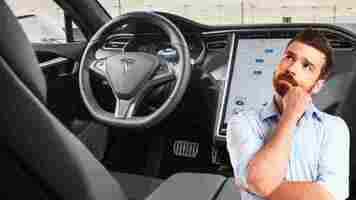Courts uphold UK Uber driver classifications but mobility worker challenges remain
This week the UK Supreme Court upheld an earlier ruling in May that Uber drivers are legally classed as workers and must be treated as such.

The court ruled that it is unlawful for a Private Hire Vehicle (PHV) Operator to act as an ‘agent’ between the driver and passenger, meaning that all operators must contract directly with both drivers and riders.
What’s the importance of being classified as an Uber employee?
Being classified as an employee gives you a range of rights unavailable to ‘gig economy’ casual workers. These typically include:
National minimum mage
A statutory minimum level of paid holiday
Protection against deductions from pay
Protection against discrimination
Whistleblower protection
A notice period for retrenchments
The urg.uk/” target=”_blank” rel=”noopener” data-mce-href=”https://www.adcurg.uk/”> App Drivers and Couriers Union note that the ruling also brings important new safety protections to consumers and the possibility for redress.
In May, UK worker union GMB announced a groundbreaking trade union recognition deal with Uber. By classifying drivers as employees, not independent contractors, “employees” have the right to form and join unions.
According to Mick Rix, National Officer at GMB:
an data-preserver-spaces=”true”>This follows the Uber ban in BrusselsIn November, Uber was forced to halt all operations in Brussels following a ruling issued by the city’s Court of Appeal.
The ruling meant that Uber drivers could no longer use their smartphones to arrange rides in Brussels. This effectively stops Uber app rides. Uber had been renting cars with drivers to bypass an earlier ban on its low-cost UberPop service.
The company has previously struggled to maintain its legal presence in the r-rtfLink” href=”https://apnewom/article/technology-europe-business-netherlands-amsterdam-8ec6f70b91152243f2594fbab1c9f28a” target=”_blank” rel=”noopener” data-mce-href=”https://apnewom/article/technology-europe-business-netherlands-amsterdam-8ec6f70b91152243f2594fbab1c9f28a”> Netherlands , Germany , and Italy .
However, it’s unlikely being employees will save all
Ultimately, we still have the phenomenon of big companies with loads of money finding ways to thwart worker rights. A key example is Gorillas .
Founded in May 2020, Gorillas launched a platform in Berlin that promises to deliver groceries within ten minutes. Workers are based at a warehouse and use an ebike to deliver groceries nearby. Workers are contracted and receive an hourly wage (including waiting time) and customers’ tips.


This year the company achieved unicorn staff in nine months, reaching a $1 billion (€858 million) valuation , becoming the fastest-ever German unicorn. Gorillas now operate in 60 cities in 9 countries in Europe and North America.
Sounds pretty good?
Gorillas shows what happens when worker conditions and profits collide
Well, in less than a year, the workers have been plagued by workplace accidents and injuries due to a lack of weight restrictions for backpacks, bikes without baskets, expanded geofencing for routing, and poor provisions for cold weather.
Strikes have been common since the company started its Berlin rollout, and the company went to court to stop the workers from forming a works council.– Fortunately, the judge thwarted their efforts, and in November, the company formed a works council.
There’s been some attempts to alleviate these problems, such as updating the rider kit and introducing a limited number of cargo bikes. Still, tensions are high with continued protests throughout Germany for better conditions. It’s bloody cold right now. Riding a bike out in the elements is an extremely tough work shift.
Uber, Gorillas and their compatriots are just more cases of David and Goliath
I hate to use a cliche. But the David and Goliath problem is alive and well in the ride-sharing and food delivery economy. It feels like “wack-a-mole.” Worker unions have to continuously go to court to respond to company appeals. The process repeats whenever the next dispute pops up.
Workers have long been promised shiny coins like “flexibility” and “choose your own hours” at the expense of basic workers’ rights. While the companies, particularly in the food delivery space, become huge micromobility customers in their own right, reinforcing and normalizing their current conditions.
Overall, union wins pave the way for more micromobility rights
In the case of the UK, unions won round one for Uber drivers. But their work isn’t over. The ADCU is now working with UK legal firm Dallas McMillan to represent members at the Employment Tribunal against BOLT . Employees are seeking worker status for all BOLT drivers.
In November, Uber was forced to halt all operations in Brussels following a ruling issued by the city’s Court of Appeal.
The ruling meant that Uber drivers could no longer use their smartphones to arrange rides in Brussels. This effectively stops Uber app rides. Uber had been renting cars with drivers to bypass an earlier ban on its low-cost UberPop service.
The company has previously struggled to maintain its legal presence in the r-rtfLink” href=”https://apnewom/article/technology-europe-business-netherlands-amsterdam-8ec6f70b91152243f2594fbab1c9f28a” target=”_blank” rel=”noopener” data-mce-href=”https://apnewom/article/technology-europe-business-netherlands-amsterdam-8ec6f70b91152243f2594fbab1c9f28a”> Netherlands , Germany , and Italy .
However, it’s unlikely being employees will save all
Ultimately, we still have the phenomenon of big companies with loads of money finding ways to thwart worker rights. A key example is Gorillas .
Founded in May 2020, Gorillas launched a platform in Berlin that promises to deliver groceries within ten minutes. Workers are based at a warehouse and use an ebike to deliver groceries nearby. Workers are contracted and receive an hourly wage (including waiting time) and customers’ tips.


This year the company achieved unicorn staff in nine months, reaching a $1 billion (€858 million) valuation , becoming the fastest-ever German unicorn. Gorillas now operate in 60 cities in 9 countries in Europe and North America.
Sounds pretty good?
Gorillas shows what happens when worker conditions and profits collide
Well, in less than a year, the workers have been plagued by workplace accidents and injuries due to a lack of weight restrictions for backpacks, bikes without baskets, expanded geofencing for routing, and poor provisions for cold weather.
Strikes have been common since the company started its Berlin rollout, and the company went to court to stop the workers from forming a works council.– Fortunately, the judge thwarted their efforts, and in November, the company formed a works council.
There’s been some attempts to alleviate these problems, such as updating the rider kit and introducing a limited number of cargo bikes. Still, tensions are high with continued protests throughout Germany for better conditions. It’s bloody cold right now. Riding a bike out in the elements is an extremely tough work shift.
Uber, Gorillas and their compatriots are just more cases of David and Goliath
I hate to use a cliche. But the David and Goliath problem is alive and well in the ride-sharing and food delivery economy. It feels like “wack-a-mole.” Worker unions have to continuously go to court to respond to company appeals. The process repeats whenever the next dispute pops up.
Workers have long been promised shiny coins like “flexibility” and “choose your own hours” at the expense of basic workers’ rights. While the companies, particularly in the food delivery space, become huge micromobility customers in their own right, reinforcing and normalizing their current conditions.
Overall, union wins pave the way for more micromobility rights
In the case of the UK, unions won round one for Uber drivers. But their work isn’t over. The ADCU is now working with UK legal firm Dallas McMillan to represent members at the Employment Tribunal against BOLT . Employees are seeking worker status for all BOLT drivers.
Tesla’s Full Self Driving Beta 10 is here — but that’s not as cool as it sounds
Did you know SHIFT is taking the stage this fall ? Together with an amazing line-up of experts, we will explore the future of mobility during TNW Conference 2021. Secure your ticket now!

On Friday, Tesla owners in the Early Access Program got the Full Self-Driving Beta 10 update, which Elon Musk announced a week before.
Naturally, the release was accompanied by Musk’s usual boastful comments:
A number of FSD Beta 10 ‘testers’ have uploaded their experience on social media, and we can get a glimpse of how ‘mind-blowing’ the self-driving upgrade really is.
First up, it appears that the Beta 10 features some user interface changes. For starters, the driving visualizations have been cleared up a bit.
For the Model 3 and Model Y, the icons on the left side of the display have been rearranged. For the Model X, time, temperature, and charge level have been removed, while speed and AP have been shifted to the right.
Perfomance-wise, some drivers mentioned that the software upgrade delivers smoother turns and roundabouts in self-driving mode, with the car making more “confident” decisions than before.
Among them, YouTuber AI Addict praised the software’s performance, as it was able to efficiently navigate — for the first time — through twisty Lombart Street in San Francisco, without requiring any intervention from the driver.
On Monday, AI Addict posted another video, where he took his ‘updated’ Tesla for a stress test in down town San Jose. Only this time the results weren’t so promising.
Apart from a number of failed turns, the car goes straight into a “Road Closed” barrier, it continuously attempts to enter the bike lane, and it even drives onto the curb.
As with the Beta 9 update , it seems once more clear that, despite some improvements, the software isn’t ready to handle stressful situations while driving in cities.
So, no, my mind isn’t blown by the Beta 10, and unless future updates get significantly more refined, I don’t think they’ll easily justify FSD’s exorbitant $10,000 price tag.
In any case, Elon Musk has hinted that Beta 10.1 might be available as a public option two weeks after version 10. Let’s see what this will bring to the table…
Do EVs excite your electrons? Do ebikes get your wheels spinning? Do self-driving cars get you all charged up?
Then you need the weekly SHIFT newsletter in your life. Click here to sign up.
4 personality types old-school carmakers can use to stay relevant
How often do you get a second chance in life? Automotive OEMs have always been strong in professionalizing their traditional business model, focusing on volumes and pure product selling. However, looking at the numbers, their sales have been struggling in recent years, even before COVID-19.

Digital trends and the impact of COVID-19 on the mobility market
Why so? The mobility market has been disrupted by many new mobility players, which have leveraged recent digital trends to take over customer interface and passengers. For example, there’s Uber, Didi, and Gett getting away from car ownership…Lilium, Bird, and EHang exploring new urban transportation modes… or Moovit and Waze leveraging the power of mobility data.
However, a silver lining of COVID-19 for OEMs may be that it is providing them with a second chance: decreasing ridership and limited cash reserves bring new mobility players to a survival struggle while trying to adapt their business models which are not sustainable anymore. This is a historic occasion for OEMs to reinsert themselves back in the market.
The 4 OEM archetypes
How can then automotive OEMs do that? Evolving from the traditional pure volume-selling business model, OEMs can adjust their business model and follow 4 future-oriented archetypes to redefine their positioning in the industry:
Smart car: The future starts with a smarter and connected car. The business model is still the traditional one, focusing on car sales. Additional digital on-demand services are offered on top, for extra fees.
Car-as-a-service: The first step away from car ownership. The car is offered as an all-inclusive subscription package which offers additional flexibility (e.g. I can switch a car if I get tired of the color, or if I need a bigger one for holidays).
Mobility-as-a-service: The car is now shared and part of a seamless door-to-door mobility solution, throughout different transportation modes. Integrated booking and ticketing are also offered via a central platform/app.
Vehicle-as-a-Platform: A long-term futuristic archetype, an ecosystem that has an autonomous key device. Personal mobility becomes only one of many daily-life use cases, such as grocery shopping or school pickups.
This article was written by Philipp Grosse Kleimann, Senior Partner & Global Head of Automotive & New Mobility, Siemens Advanta Consulting on The Urban Mobility Daily , the content site of the Urban Mobility Company, a Paris-based company which is moving the business of mobility forward through physical and virtual events and services. Join their community of 10K+ global mobility professionals by signing up for the Urban Mobility Weekly newsletter . Read the original article here and follow them on Linkedin and Twitter .
SHIFT is brought to you by Polestar. It’s time to accelerate the shift to sustainable mobility. That is why Polestar combines electric driving with cutting-edge design and thrilling performance. Find out how .